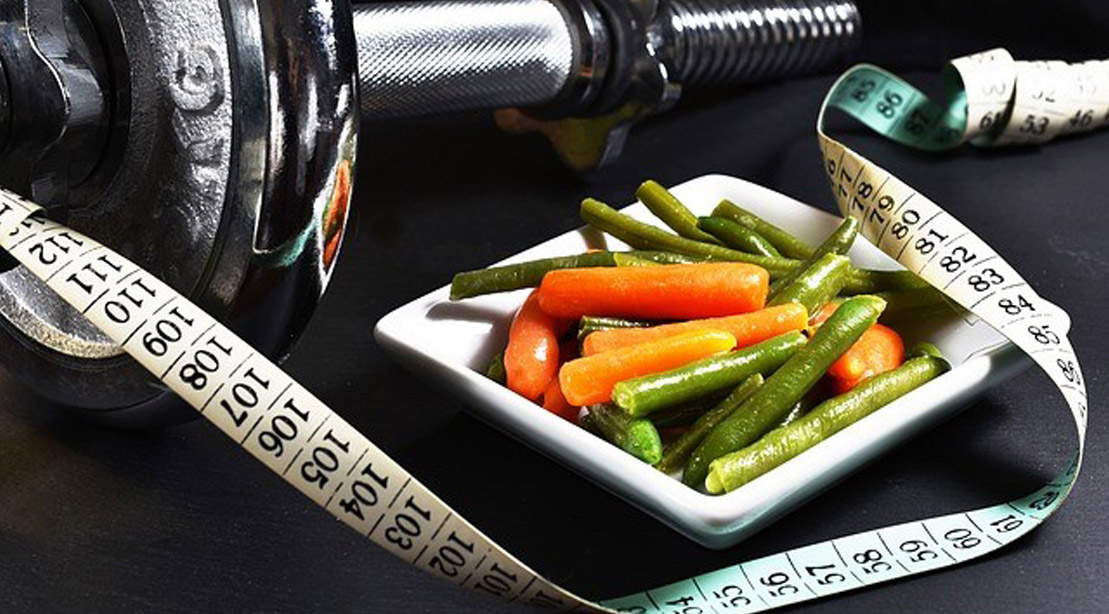There are three basic macronutrients: protein, fat and carbohydrates. They are all a combination of carbon, hydrogen and oxygen, with protein also containing nitrogen. The particular molecular construction of each explains how it works in the body. Example of calorie content: protein and carbohydrates contain 4 calories per gram, fat 9 calories. (Alcohol has 7 calories per gram.) Calorie count is extremely important when planning a diet to stay in a negative calorie balance. So not only do bodybuilders need to make sure they're consuming enough protein (at least 1 gram per 2.2 pounds of lean body mass), but they also need to exercise to burn energy and limit their food and calorie intake adequately.
If you take in more calories than you burn, the body stores the excess as fat. When you burn more energy than you take in, your metabolism begins converting stored fat into the energy needed to make up the deficit.
All of this is pretty basic knowledge. But one aspect of nutrition that many don't understand is the role of the glycemic index.
The glycemic index is a measure of how quickly different foods are digested. Shutterstock
The glycemic index is a measure of how quickly different foods are digested. Foods with a low glycemic index are metabolized fairly slowly, while those with a high glycemic index are metabolized more quickly - and enter the bloodstream quickly as glucose, causing the body to release insulin as a result. An excess of insulin is called an insulin spike.
Insulin, a hormone produced by your pancreas, opens cells to allow glucose to enter them. Without insulin, glucose floats around in your bloodstream, becoming increasingly concentrated over time.
When glucose builds up in your bloodstream, your blood sugar (blood sugar) levels rise. If they increase too much, this causes long-term damage to organs, nerves and blood vessels. But in terms of nutrition, it also keeps your body from burning fat for energy and drives fat and sugar from your bloodstream into your fat cells.
All of this makes your body think it's starving, which causes it to slow down your metabolism and increase your hunger.
 Caloric content is extremely important when it comes to planning a diet to stay in a negative calorie balance Shutterstock
Caloric content is extremely important when it comes to planning a diet to stay in a negative calorie balance Shutterstock
Recently, people have become increasingly carb-averse and believe that consuming carbohydrates leads to fat gain. But this view treats all carbohydrates as equal, which they are not. Carbohydrates used to be classified as simple or complex. Today we have a more differentiated perspective. What used to be called simple carbohydrates are now identified as having a high glycemic index, meaning they enter the bloodstream quickly. Complex carbohydrates are now those with a low glycemic index, indicating that they are digested more slowly and contribute to a slower rise in blood sugar.
Protein and fatty foods have a very low glycemic index. Carbohydrates have a higher glycemic index, but other carbohydrate-containing foods can be digested much faster or much slower. For example, fructose (found in fruit) has an extremely high glycemic index. Starches like rice or potatoes have a lower glycemic index. If you want to eat low glycemic index carbohydrates, opt for green or yellow vegetables.
But the glycemic index is primarily a measure of how quickly food is digested once it's in the stomach on its own. For example, when you eat something on an empty stomach. However, this is not usually how you eat. We usually eat a variety of foods, all of which are in the stomach together. If this is the case, the glycemic index of these foods is averaged. So if you eat high-glycemic fruits with protein or fat already in your stomach, the digestion of the high-glycemic carbohydrates will slow down significantly, resulting in a much slower rise in blood sugar.
 We usually eat a variety of foods, all of which are in the stomach together. If this is the case, the glycemic index of these foods is averaged. Shutterstock
We usually eat a variety of foods, all of which are in the stomach together. If this is the case, the glycemic index of these foods is averaged. Shutterstock
So make sure you pay attention to macronutrients and calories when planning your diet, eat enough protein and control your fat intake to reduce calories. For carbohydrates, emphasize vegetables rather than starches. And eat high-glycemic foods like fruit or fruit juices only when combined with low-glycemic foods in the stomach.
For example, you can drink a glass of fruit juice after you've already eaten bacon and eggs without raising your insulin levels, but drinking the juice on an empty stomach is likely to cause insulin levels.
SUMMARY
In terms of macronutrients, all foods that are neither protein nor fat are carbohydrates. All carbohydrates are a type of sugar, but there are different types of sugar. Some are metabolized faster in the body than others. The rate they reach is called the glycemic index - the measure of how quickly food is converted to glycogen in the blood. Fruits that contain fructose have a very high glycemic index, starches lower, and vegetables even lower.
There is a glycemic index rating system. Low GI foods have a rating of 55 or less, and foods with a rating of 70-100 are considered high GI foods. Intermediate level foods have a glycemic index of 56-69.
The measure of the glycemic index of the food in your stomach is determined by taking an average of the GI of the different foods you are trying to digest. In the presence of fat or protein, this lowers the GI of the sugar-rich stomach contents. So it makes sense to eat high GI foods in combination with low GI foods. For example, drinking orange juice for breakfast could be a problem as the sugar would spike your insulin levels. But that's not such a problem if you're also eating bacon and eggs, which are packed with protein and fat.
In the age of “keto diets,” carbohydrates have developed a negative reputation. But carbohydrates are an essential nutrient and an important part of a healthy diet. You just have to keep in mind that not all carbohydrates are created equal, some sugars are metabolized faster and cause extreme insulin spikes, so attention must be paid to the glycemic index

